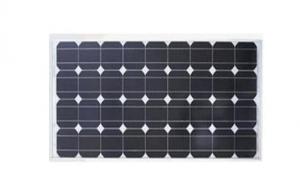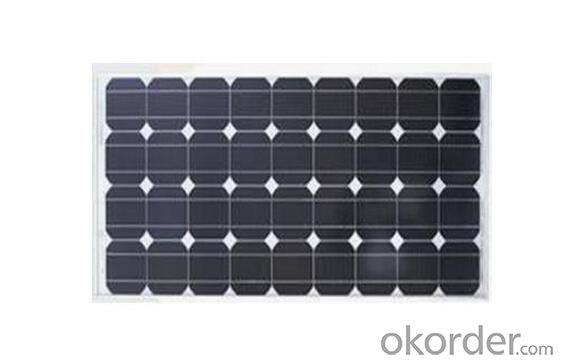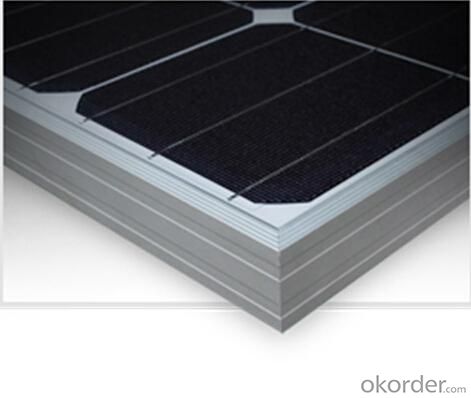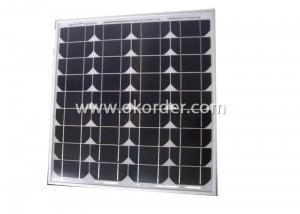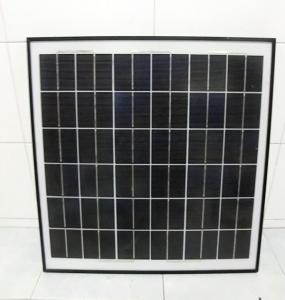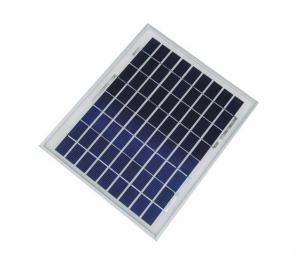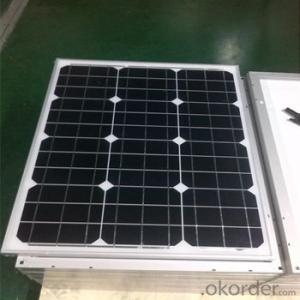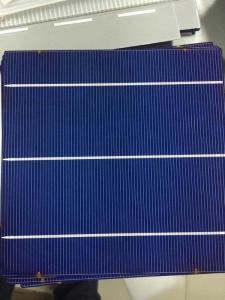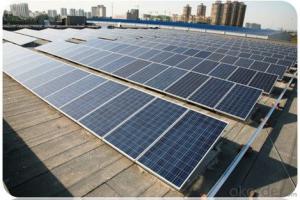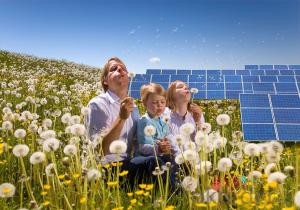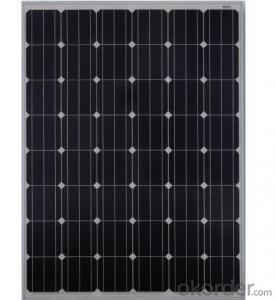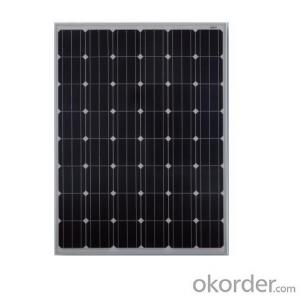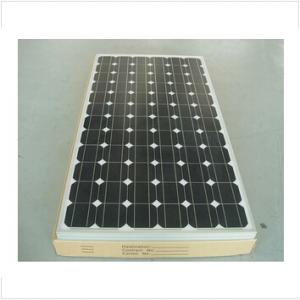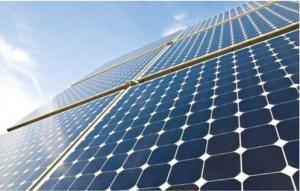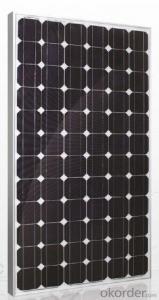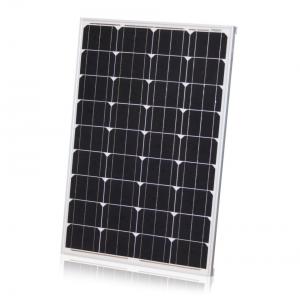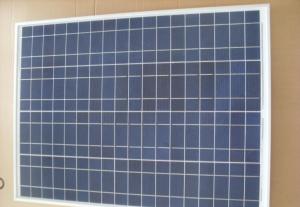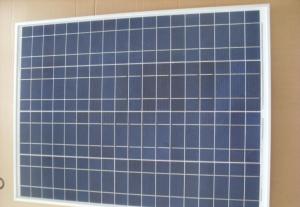Bouge Rv Solar Panels - Monocrystalline Solar Panel 48cell-215w
- Loading Port:
- China Main Port
- Payment Terms:
- TT or LC
- Min Order Qty:
- 1000 watt
- Supply Capability:
- 10000000 watt/month
OKorder Service Pledge
OKorder Financial Service
You Might Also Like
1. Structure of Monocrystalline Silicon Solar Modules 48Cell-215W Description
Solar panel refers either to a photovoltaics (PV) module, a solar hot water panel, or to a set of solar photovoltaics modules electrically
connected and mounted on a supporting structure. A PV module is a packaged, connected assembly of solar cells. Solar panels can be
used as a component of a larger photovoltaic system to generate and supply electricity in commercial and residential applications. Each
module is rated by its DC output power under standard test conditions, and typically ranges from 100 to 320 watts. The efficiency of a
module determines the area of a module given the same rated output – an 8% efficient 230 watt module will have twice the area of a 16%
efficient 230 watt module. There are a few solar panels available that are exceeding 19% efficiency. A single solar module can produce only
a limited amount of power; most installations contain multiple modules. A photovoltaic system typically includes a panel or an array of solar
modules, an inverter, and sometimes a battery and/or solar tracker and interconnection wiring.
2. Main Features of the Monocrystalline Silicon Solar Modules 48Cell-215W
*QUALIFICATIONS & CERTIFICATES
IEC 61215, IEC 61730, MCS, CE, ISO 9001:2008, ISO 14001:2004, BS OHSAS 18001:2007, PV Cycle, SA 8000
3. Monocrystalline Silicon Solar Modules 48Cell-215W Images
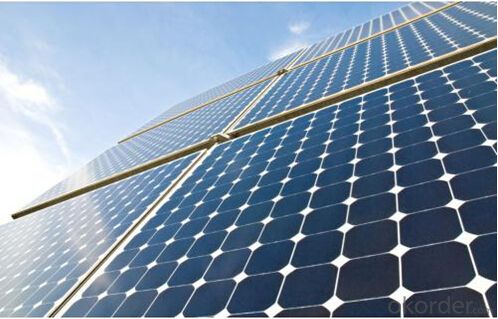
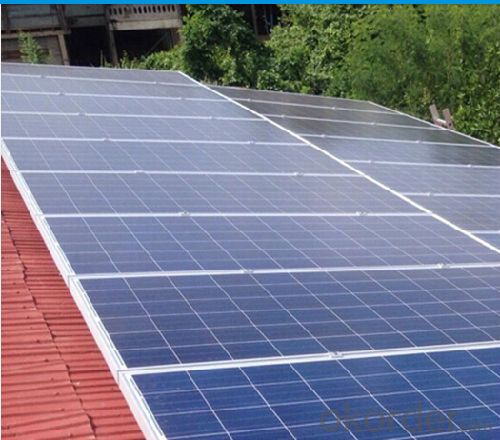
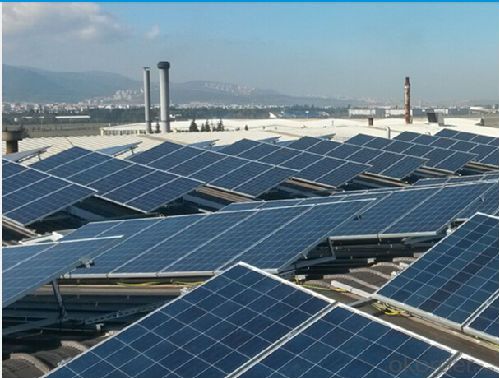
4. Monocrystalline Silicon Solar Modules 48Cell-215W Specification
窗体顶端 Electrical parameters at Standard Test Conditions (STC)窗体底端 | |||
Power output | Pmax | W | 215 |
Power output tolerances | ΔPmax | W | 0 / + 5 |
Module efficiency | ηm | % | 16.3 |
Voltage at Pmax | Vmpp | V | 24.4 |
Current at Pmax | Impp | A | 8.81 |
Open-circuit voltage | Voc | V | 30.9 |
Short-circuit current | Isc | A | 9.41 窗体底端 |
5. FAQ of Monocrystalline Silicon Solar Modules 48Cell-215W
Q1:Can we visit your factory?
A1:Sure,welcome at any time,seeing is believing.
Q2:Which payment terms can you accept?
A2:T/T,L/C,Moneygram,Paypal are available for us.
Q3:How to guarantee the Quality of the products?
A3:We have established the international advanced Quality management system,every link from raw material to final product we have strict Quality test;We resolutely put an end to unQualified products flowing into the market. At the same time, we will provide necessary follow-up service assurance.
- Q: Is it really possible for me living in Denver to build and install and setup my own solar panel to help make electricity for my home?
- Build okorder /
- Q: how much do you think it would cost for installation?i heard that solar panels can store electricity and any excess electricity gets sold back to the electric company. how much money can a home owner make from doing this?do you think solar panels are worth it?
- If you're in a sunny area, and the cost of electricity is high, solar panels can be worth it. But it's not a big moneymaker, it's something that pays back over long timeframes. We live in northern California, and our system is about break even, but that's because our electricity usage was low to begin with. If you want to see our system, look at the web page in my profile. Are panels worth it in your area? The only way to know for sure is to find a local installer in your phone book, and then ask for local references. If you can't find a local installer, that's a clue, and if they can't give you any references that are nearby, that's another clue. The panels don't actually store energy, the energy is sold back to the power company when what you produce is more than you consume, driving the meter backwards. Again, this is not a big moneymaker, and in fact, it may be impossible to make a profit, depending on your local laws.
- Q: what direction should solar panels face to get the best exposure of the sun.
- Not compass south, but solar south. It's easy to find. Google Find Solar south and you can get directions. Even better are trackers, that will let your panels track the sun all day.
- Q: Can I make a solar panel at home?How to make it?
- Make okorder
- Q: About how much would it cost to purchase and install solar panels for the average American house so that the house can be off the power grid and use the same amount of electricity as it normally does?
- We are installing a 3.3 kWh system on a 2 story house. Really three story if you add in the basement. It will provide about 3/4 of the electric power they use per year. The cost of the complete system installed is in the $26,000 range. A 4.5 kWh system would wipe out their bill and would cost in the $34,000 range installed. But it had too many solar modules to fit on the roof. Now if you are wanting to go off grid in the average American home you would spend about $60,000 easy. Most American family's are very very waste full. Very few even have CFL lighting and leave every light in the house on. I have even known of some that will use a 60 watt night light when it is so easy to put in a CFL or a 4 watt night light. With 4 TV sets running in most homes at the same time a 200 watt stereo system for background noise.. Well we Americans have a long ways to go yet.
- Q: im interested in starting a solar panel manufacturing company. ive researched on how to make them and it doesnt look too hard, and is definitely something i can figure out. i would be starting from nothing so my question is what are the chances of me actually selling a lot of panels and the business actually succeding?thanks
- No okorder 3) Figure out how much labor and material cost would go into each panel. Would you locate in the US? It's hard to beat the big players in China, in this commodity market. It would be like having a small company to make laptops, and trying to beat HP, Dell,and Lenovo.
- Q: How do solar panels impact the electricity bill?
- Solar panels can significantly reduce or even eliminate electricity bills by generating clean and renewable energy from the sun. By harnessing solar power, homeowners can offset their electricity consumption and potentially earn credits by selling excess energy back to the grid. This can lead to substantial savings on monthly electricity bills.
- Q: am having a 75 watts siemens solar panel and is giving me 2.89volts during bright light, i wanted to know can this be used to charge 00Am/hr battery?
- Many of the panels used on homes are designed to produce 2 volts DC. 0 of them wired in a series would produce 20 volts DC. An inverter is used to change the DC voltage to AC. The other aspect of electricity is amperage. With electrical units wired in series the voltage is added. When they are wired in parallel the amperage is added. The Volts x Amps produced will give you the wattage. A wise homeowner will examine their electric bills or the equipment used to determine their demand. They will consult tables that let them know how much sunlight their area receives each year as this will alter the rated performance of the panels. Then they will try and determine how much of the demand they want to fill. 80% may be economical. Then they also want to determine what they will do with excess electricity that may be produced during the summer months of intense sun and how they will supply the shortfall of low sun winter months. From all this they will determine the number of solar panels they need to purchase.
- Q: How do solar panels affect roof warranty?
- Solar panels can potentially affect roof warranties because their installation requires drilling holes in the roof, which can compromise its integrity. However, many solar companies offer warranties that cover any damages caused by the installation process, ensuring that the roof warranty remains intact. It is important to check with both the solar company and the roofing manufacturer to understand the impact of solar panels on the roof warranty.
- Q: Can solar panels be used in conjunction with energy-efficient appliances?
- Yes, solar panels can definitely be used in conjunction with energy-efficient appliances. In fact, pairing solar panels with energy-efficient appliances is a great way to maximize the benefits of renewable energy and reduce overall electricity consumption. By generating clean electricity from the sun, solar panels can power energy-efficient appliances, resulting in significant energy savings and a more sustainable lifestyle.
Send your message to us
Bouge Rv Solar Panels - Monocrystalline Solar Panel 48cell-215w
- Loading Port:
- China Main Port
- Payment Terms:
- TT or LC
- Min Order Qty:
- 1000 watt
- Supply Capability:
- 10000000 watt/month
OKorder Service Pledge
OKorder Financial Service
Similar products
Hot products
Hot Searches
